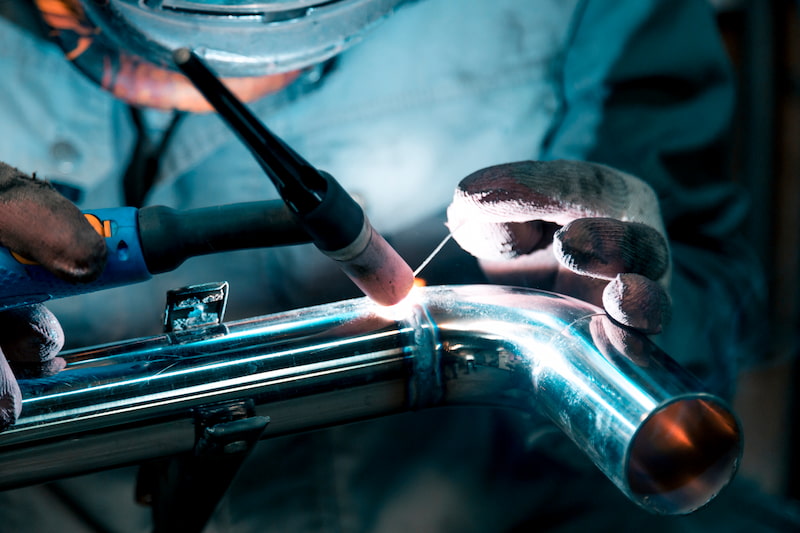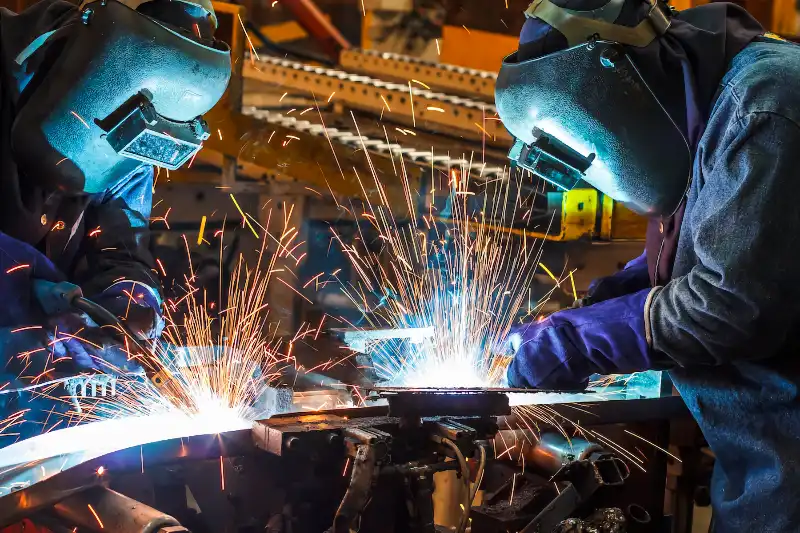Typical Welding Repair Service Issues and How to Address Them Properly
Welding repair services typically experience an array of issues that can jeopardize the stability of the end product. Usual issues include insufficient infiltration, porosity, and misalignment, amongst others. Each issue provides special difficulties that need certain approaches for resolution. Recognizing these problems is vital for welders intending to enhance their outcomes and abilities. This discussion will certainly check out these typical welding repair work problems and reliable methods to resolve them.
Insufficient Infiltration
Insufficient penetration happens when the weld steel falls short to totally fuse with the base material, resulting in weak joints and possible structural failures. This issue usually comes from not enough heat input, incorrect electrode angle, or inappropriate welding speed. Welders may run into inadequate infiltration because of a mistake of the necessary parameters for a particular material density or kind. In addition, contamination on the base product's surface area can hinder efficient bonding, worsening the issue. To deal with inadequate infiltration, welders should ensure ideal setups on their devices and preserve a clean work surface area. Normal inspection of welds is advised to identify any deficiencies early, enabling timely modifications and the prevention of endangered structural stability in welded assemblies.
Porosity
Porosity is a typical flaw in bonded joints that shows up as little gas bubbles trapped within the weld steel. This issue can endanger the stability of the weld, resulting in reduced strength and prospective failure under tension. Montana Mobile Welding and Repair Belgrade Fabrication. Porosity commonly arises from contamination, wetness, or improper welding strategies, which allow gases to leave right into the liquified weld pool. To deal with porosity, welders ought to ensure correct surface area preparation, preserve a tidy workplace, and utilize suitable welding criteria. Furthermore, selecting the best filler product and shielding gas can reduce gas entrapment. Regular evaluation and screening of welds can assist identify porosity early, guaranteeing timely rehabilitative actions are taken, thus maintaining the top quality and integrity of the welded structure
Imbalance
Misalignment in welding can emerge from numerous aspects, including inappropriate arrangement and thermal development. Recognizing the origin is necessary for effective resolution. Numerous modification strategies are readily available to realign components and ensure structural honesty.
Reasons of Imbalance
Welding imbalance often comes from a selection of underlying issues that can endanger architectural integrity. One main cause is incorrect fit-up of elements before welding, which can cause spaces and irregular surface areas. Variants in thermal expansion throughout the welding procedure can likewise result in distortion, especially if the products being joined have different coefficients of expansion. Furthermore, inadequate securing and fixturing may stop working to hold parts securely in location, causing motion throughout welding. Badly kept tools, consisting of welding devices and tools, may present inconsistencies in the weld bead, more contributing to imbalance. Lastly, driver error, coming from not enough training or experience, can likewise play a significant function in developing misaligned welds.
Correction Techniques Available
Attending to misalignment properly needs a mix of restorative techniques tailored to the details concerns handy. One common approach is the use of jigs or components to hold elements in the proper placement during welding, ensuring constant positioning. Furthermore, pre-heating the products can help in reducing distortion and boost fit-up. For substantial misalignment, mechanical adjustment techniques, such as utilizing hydraulic jacks or clamps, can be employed to remedy the position prior to welding. Post-weld warm therapy might additionally be essential to relieve stress and anxieties brought on by misalignment. Cautious examination and change throughout the setup stage can stop misalignment issues from ending up being substantial issues, advertising a smoother welding process and improving overall structural honesty.
Distortion
Distortion is a typical challenge in welding that can occur from different variables, including uneven home heating and air conditioning. Understanding the causes of distortion is necessary for implementing effective prevention methods. Resolving this problem not only enhances architectural stability yet also improves the general quality of the weld.
Reasons of Distortion
When subjected to the intense warmth of welding, materials often undergo modifications that can bring about distortion. This phenomenon mostly occurs from thermal development and contraction during the welding process. As the weld location heats up, the product broadens; upon cooling, it contracts, which can produce internal stresses. In enhancement, uneven home heating across a work surface can intensify these anxieties, resulting in warping or flexing. The kind of product also plays a substantial role; metals with differing thermal conductivity and coefficients of development might react in different ways, leading to unforeseeable distortions. Furthermore, inadequate joint style and poor fixturing can add to misalignment during welding, enhancing the chance of distortion. Recognizing these causes is important for effective welding repair and avoidance techniques.
Prevention Techniques
Efficient prevention techniques for distortion during welding concentrate on regulating heat input and making sure correct joint design. Keeping a consistent heat input helps to reduce thermal expansion and contraction, which can result in distortion. Utilizing strategies such as preheating the workpiece can also lower the temperature level gradient, advertising consistent home heating. Furthermore, picking suitable joint layouts, such as T-joints or lap joints, can enhance stability and decrease stress and anxiety focus. Executing correct fixturing to secure the workpieces in area additionally aids in keeping positioning during the welding procedure. Staggered welding sequences can distribute warm a lot more equally, stopping local distortion. By applying these techniques, welders can greatly reduce the likelihood of distortion and improve the general quality of their welds.
Cracking
Splitting is an usual concern come across in welding fixings, frequently arising from different elements such as improper cooling prices, material selection, or poor joint preparation. The incident of cracks can significantly compromise the stability of the weld, leading to prospective failures throughout procedure. To address here this issue, welders must initially examine the root triggers, making certain that materials work and suitably chosen for the details application. Furthermore, controlling the air conditioning rate during the welding procedure is important; quick air conditioning can generate anxiety and cause cracking. Correct joint design and preparation also add to lessening the risk. Executing these methods can enhance weld top quality and toughness, eventually decreasing the likelihood of fracturing in finished weldments.

Insufficient Combination
A significant concern in welding repair services is insufficient combination, which occurs when the weld metal does not effectively bond with the base material or previous weld passes - Montana Mobile Welding and Repair Belgrade Welding. This problem can result in weak points in the joint, potentially endangering the integrity of the bonded structure. Variables adding to incomplete blend consist of not enough heat input, incorrect welding strategy, and contamination of the surface areas being signed up with. To resolve this concern efficiently, welders ought to ensure correct pre-weld cleaning and surface prep work, as well as readjust their welding specifications to achieve appropriate penetration and fusion. Regular inspection throughout the welding procedure can also assist recognize insufficient fusion early, enabling for prompt corrective measures to improve the overall quality of the weld
Overheating
While welding repairs can boost architectural stability, overheating provides a significant difficulty that can cause material degradation. Excessive warmth during welding can alter the mechanical homes of steels, resulting in decreased strength, raised brittleness, and bending. This phenomenon is particularly essential in high-stress applications where structural dependability is vital. Recognizing overheating can involve visual evaluations for discoloration or distortion, along with monitoring temperature level during the welding procedure. To mitigate the dangers connected with getting too hot, welders must utilize ideal strategies, such as controlling warm input, changing travel rate, and making use of ideal filler materials. Furthermore, implementing pre- and post-weld warmth therapies can assist bring back material buildings and enhance the general quality of the repair work, guaranteeing long-term efficiency and safety and security.
Often Asked Concerns
What Are the Typical Signs of a Welding Flaw?

How Can I Check My Welds for Quality?
To check welds for top quality, one can utilize visual inspections, ultrasonic screening, and radiographic techniques. Each method ensures architectural honesty, recognizes issues, and confirms adherence to specified criteria, ultimately improving the integrity of the bonded joints.
What Security Safety Measures Should I Take While Welding?
When welding, one must prioritize security by putting on suitable individual protective equipment, making sure correct air flow, safeguarding flammable products away, preserving a tidy work space, and understanding surroundings to avoid injuries and accidents.
Can I Repair a Weld Without Remodeling the Entire Joint?
Repairing a weld without renovating the entire joint is possible, depending upon the damage (Montana Mobile Welding and Repair). Strategies such as grinding, including filler material, or utilizing a welding process can effectively address particular imperfections while maintaining the bordering framework
What Devices Are Important for Effective Welding Fixes?
Necessary devices for efficient welding repairs include a welding machine, cord brush, mill, safety equipment, clamps, and filler products. Each device plays an essential duty in guaranteeing quality and safety throughout the repair procedure. Porosity commonly develops from contamination, moisture, or incorrect welding techniques, which allow gases to escape right into the liquified weld swimming pool. Inadequately kept tools, including welding devices and tools, might introduce disparities in the weld grain, more adding to misalignment. When subjected to the extreme warm of welding, materials commonly go through changes that can lead to distortion. Fracturing is a typical issue run into in welding repair services, typically resulting from numerous aspects such as improper cooling prices, material option, or inadequate joint prep work. A substantial problem in welding fixings is incomplete combination, which takes place when the weld metal does not appropriately bond with the base material or previous weld passes.